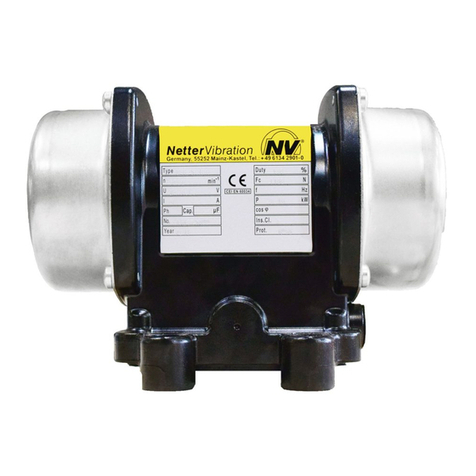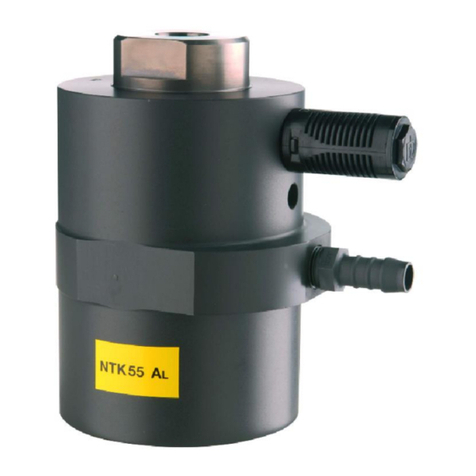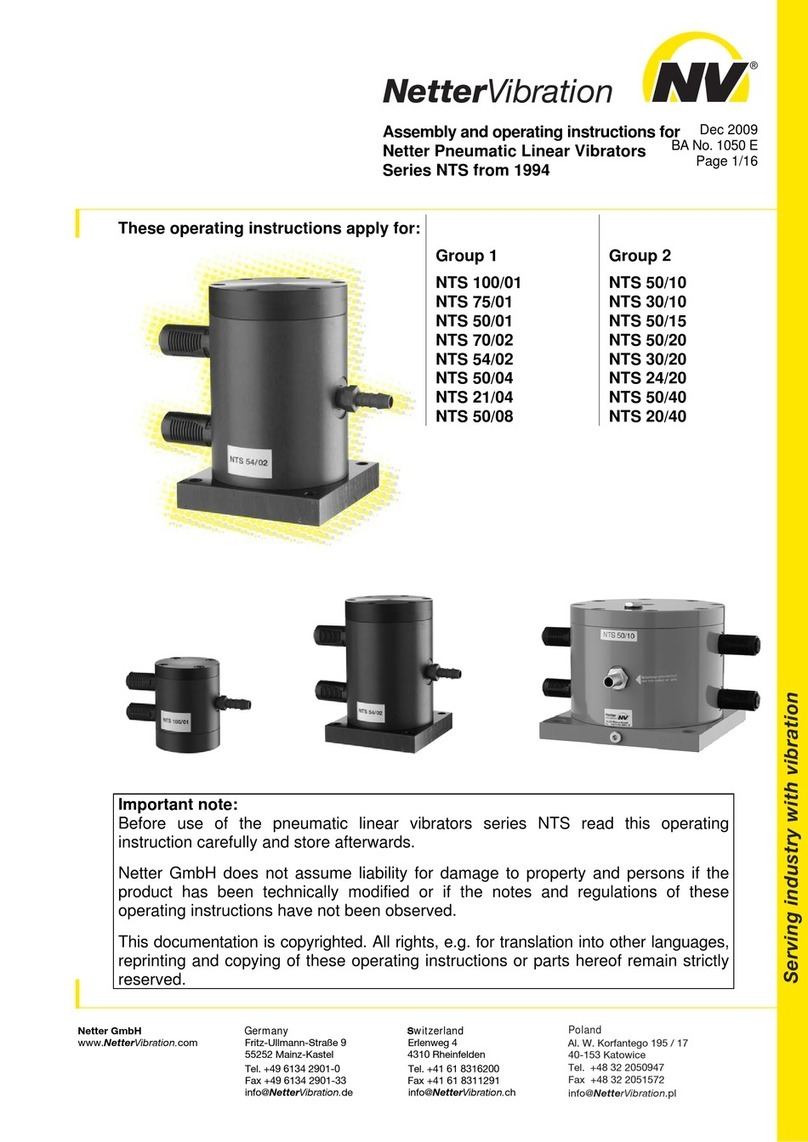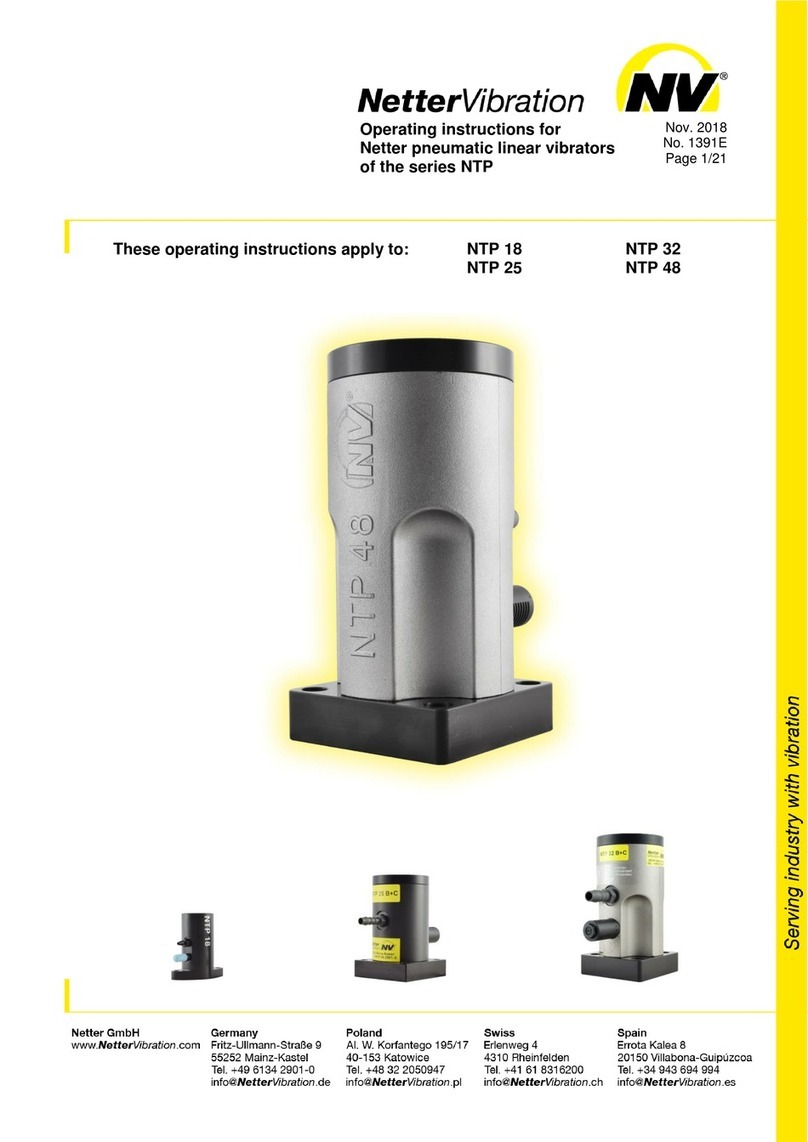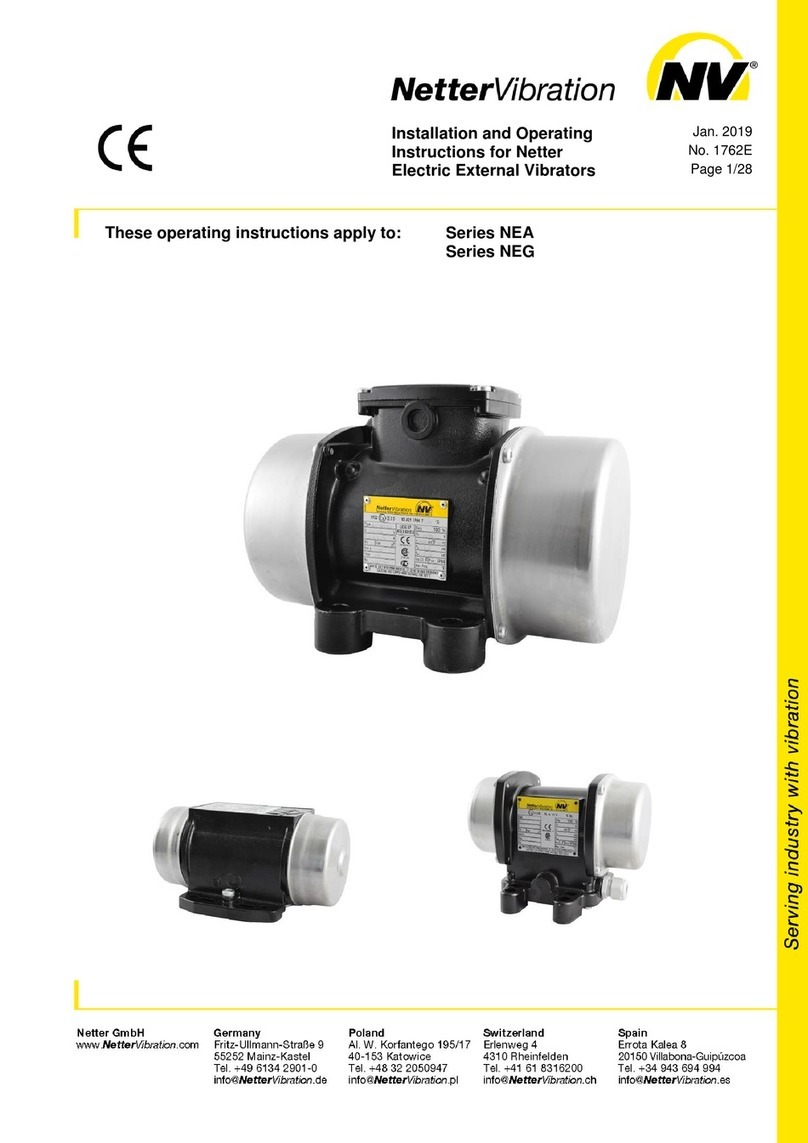
1 General information
The pneumatic vibrators of the series NCT, NCB and NCR are hereafter
referred to as "vibrators".
Please refer to the delivery note for the scope of delivery.
Check the packaging for possible transport damage. In the event of dam-
age to the packaging, check the contents for completeness and possible
damage. Inform the carrier in the case of damage.
The target group for these instructions is technical staff, who have basic
knowledge in pneumatics and mechanics.
Only complying technical staff may work on the vibrators.
The vibrators may only be installed, put into operation, maintained, trou-
bleshot and disassembled by persons authorised by the operator.
All technical information, data and instructions for installation, operation
and maintenance in these instructions are based on the latest information
available at the time of printing and take our past experience to the best of
our knowledge into account.
No claims can be derived from the information, illustrations and descrip-
tions in these operating instructions.
The manufacturer does not assume liability for damages resulting from:
failure to observe the instructions,
improper use,
unauthorised repairs,
technical modifications,
use of non-permissible spare parts.
Translations are made to the best of our knowledge.
Netter
Vibration does not assume liability for translation errors, even if the
translation was made by us or on our behalf. Only the original German text
remains binding.
Explanation of additions to names in model designations:
models for high ambient temperatures
models with higher centrifugal force
models with plastic cover
The pneumatic vibrators of the series NCT, NCB and NCR comply with the
EC Machinery Directive 2006/42/EC.
In particular, the standard EN ISO 12100 has been observed.
Directives /
standards
observed
